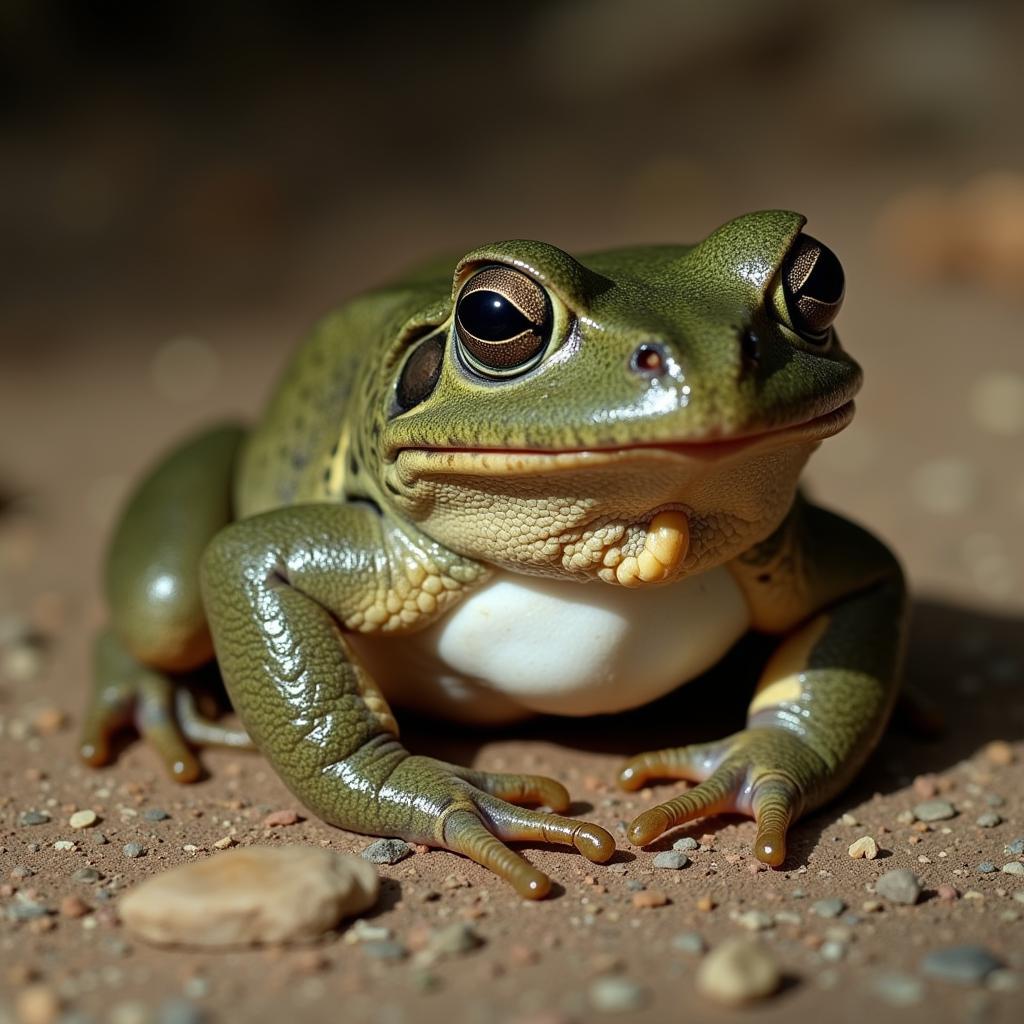Identifying African Clawed Frog Male or Female: A Comprehensive Guide
Determining the sex of your African clawed frog can be a bit tricky, especially when they’re young. But don’t worry, with a little observation and this guide, you’ll become an expert in no time. We’ll delve into the physical characteristics, behavioral differences, and even some lesser-known clues to help you confidently identify whether your aquatic friend is male or female.
Key Physical Differences
The most reliable way to differentiate between male and female African clawed frogs is by observing their physical characteristics. Here’s what to look for:
1. Size Matters: Females Take the Lead
In the world of African clawed frogs, the ladies reign supreme in size. Female frogs are noticeably larger and rounder than their male counterparts, especially as they mature. This size difference becomes more prominent as they age, with females often reaching twice the size of males.
 Female African Clawed Frog Size Comparison
Female African Clawed Frog Size Comparison
2. The Telltale Bump: Identifying Males by their Cloacal Gland
Male African clawed frogs possess a small, white bump called the cloacal gland, located just behind their back legs. This gland is responsible for producing sperm and is a clear indicator of their sex. Females, on the other hand, have a smooth, flat area in the same region.
 Male African Clawed Frog Cloacal Gland
Male African Clawed Frog Cloacal Gland
3. Forearm Extravaganza: Males Show Off Their Strength
Another distinctive feature of male African clawed frogs is their more muscular forearms. This difference is most noticeable when they are holding onto something, like a plant or the tank glass. The increased muscle mass in their forearms helps them grasp females during mating.
4. A Symphony of Silence: Only Males Serenade
While not a visual cue, the sounds your African clawed frog makes can also reveal its sex. Male African clawed frogs are known for their “singing” – a series of chirps, clicks, and rasps they use to attract mates. Females, on the other hand, are generally silent.
 African Clawed Frog Male Vocal Sac
African Clawed Frog Male Vocal Sac
Beyond the Basics: Other Considerations
While the physical characteristics and vocalizations mentioned above provide the most reliable indicators, here are a few additional factors to consider:
- Age: Sexing African clawed frogs can be challenging when they are young, as their distinctive features may not be fully developed. It’s best to wait until they are at least a year old before attempting to determine their sex.
- Color and Pattern: While not a foolproof method, some enthusiasts believe that male African clawed frogs tend to have brighter, more vibrant colors and patterns than females.
- Behavior: During mating season, male African clawed frogs may exhibit more aggressive behavior, such as chasing females and wrestling with other males.
“When determining the sex of your African clawed frog, patience is key,” advises Dr. Anya Patel, a renowned aquatic veterinarian. “Don’t be discouraged if you can’t tell right away, especially with younger frogs. Over time, their characteristics will become more pronounced.”
Frequently Asked Questions about Sexing African Clawed Frogs
1. How old does an African clawed frog need to be to determine its sex?
It’s generally recommended to wait until an African clawed frog is at least a year old before attempting to determine its sex, as their distinguishing features may not be fully developed before then.
2. Can I tell the sex of my African clawed frog based on its color?
Color can be a very unreliable indicator of sex in African clawed frogs. While some believe that males tend to be more vibrantly colored, this can vary greatly between individuals and is not a reliable method for sexing.
3. Do female African clawed frogs have cloacal glands?
No, only male African clawed frogs have cloacal glands. This gland, located behind the back legs, is responsible for producing sperm and is a clear indicator of a male frog.
4. Why is my African clawed frog making chirping noises?
If your African clawed frog is making chirping or other vocalizations, it is likely a male. These sounds are part of their mating calls and are used to attract females.
5. Can two male African clawed frogs live together?
While it’s possible to house two male African clawed frogs together, it’s important to monitor their behavior closely. Males can become territorial, especially during mating season, and may exhibit aggression towards each other.
Exploring the Fascinating World of African Clawed Frogs
Understanding the sex of your African clawed frog is just one step in appreciating these fascinating creatures. Want to learn more about their care, lifespan, or even the intriguing history of their use in pregnancy tests? Dive deeper into our articles about African clawed frog pregnancy test and African clawed frog eggs care.
By familiarizing yourself with their unique characteristics and needs, you can provide a stimulating and enriching environment for your African clawed frog companions. For those interested in the overall size and growth potential of these aquatic wonders, be sure to check out our detailed article on African clawed frog size. And if you’re curious about the average lifespan of these captivating creatures, we have a comprehensive guide on African clawed frog lifespan just for you.
Need more information about African frogs? Explore our dedicated section on about african frogs for a wealth of knowledge. Remember, providing the best care for your amphibian friends starts with understanding them!




